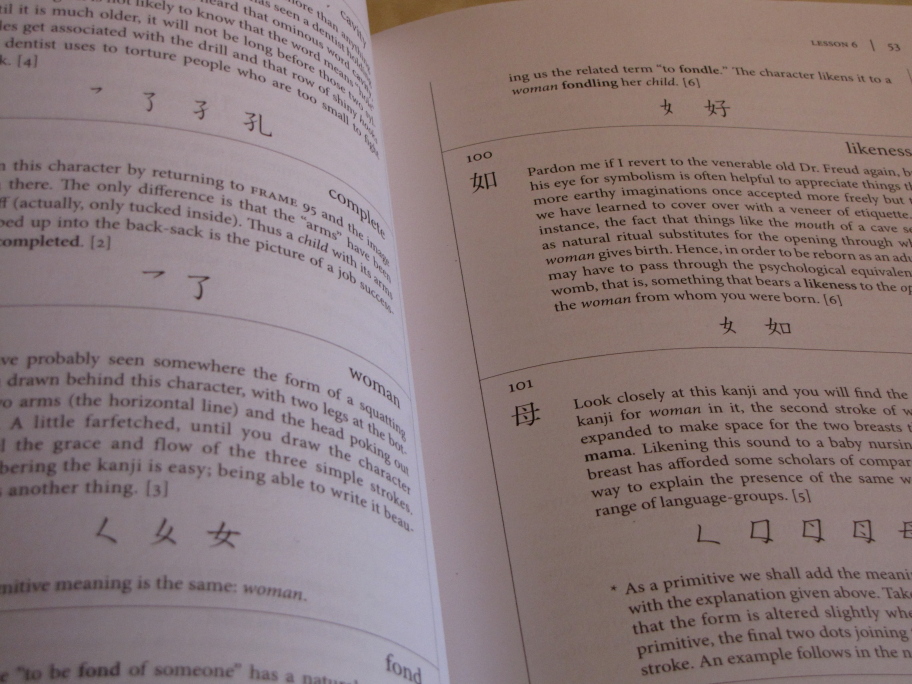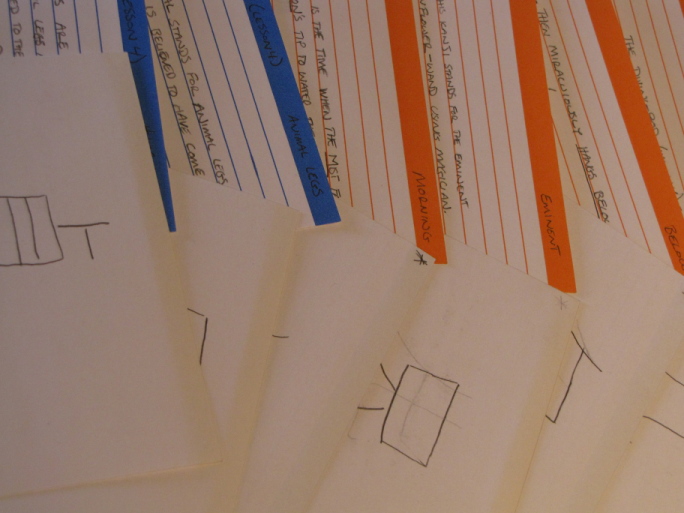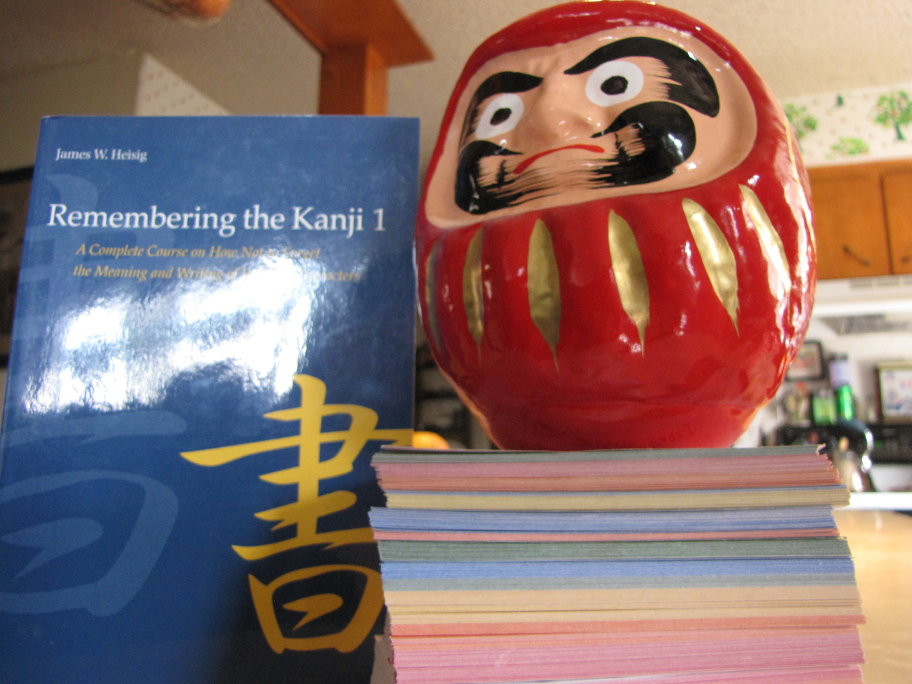Remembering the Kanji
If anyone has tried desperately like me to learn something, anything really, we must construct a method that (for us only) works. What I mean is that often we might come up with devices that make sense only to us for remembering things like Kanji. I remember once when studying the Latin words for body parts in my Anthropological Biology class in college me and a mate drew up some hilarious pictures and came up with wild stories about them to remember them (I’d repeat a few, but they weren’t quite rated “G”).
Anyway, my latest (and longest) endeavor has been learning and studying Japanese. At this point I’ve forgotten the real reason I continue to study it, only that it’s something I’ve invested so much time, effort, and money that I’m compelled to continue. Lately, I’ve been tackling Kanji which is really at the root or heart of Japanese. One can’t really tackle as much as a bathroom sign in Japan without knowing basic kanji, so it’s essential to know essential kanji. 
Luckily this isn’t something that hasn’t been tackled before. Many have come up with ‘proven’ methods for remembering Kanji– from the original ‘tried & tested’ repetition to some more obscure ones such as James Heisig’s Remember the Kanji: A complete course on How Not to Forget the meanings and writings of Japanese Characters. Heisig’s has been my current flavor of the week, because he comes at Kanji from a completely left-field method.
He points out that there’s 2,042 kanji to tackle in the Japanese Joyou Kanji alphabet. Each kanji are pretty much assembled by, what he calls variations of, Primitives. Primitives are essentially like the Lego’s of kanji where you start out with a rectangle block, a square block, and maybe a double side block and create an Lego object. That object then becomes a building block itself… soon after assembling smaller blocks into larger then into larger the whole thing takes shape (say a Lego ship, or starship).
Each block is assigned a keyword and the kanji itself. This is like Lego’s color and shape. Heisig then designs his “lessons” like a Lego instruction helping you to build the beginning kanji, the structure, then using them to form new objects.
There’s some key things to Heisig that drastically set his Kanji method apart from others… For one, Heisig presents a story for each kanji to remember the ‘keyword’ and ‘kanji construction’ by. This serves to remember the Kanji’s meaning and to remember how it’s built (i.e. whether to place ‘the moon’ to the left or right of ‘dew’ for morning 朝). Second, Heisig explains that one mustn’t write & rewrite repetitively a kanji, unless they want to perfect stroke order (in which case they should learn a different story.) This, in a way, is blasphemy to the Kanji learning methods I’ve always used…
Third, Heisig adds that this isn’t your ‘mother’s kanji book’ in which the point isn’t to learn readings, but meanings. This is because the book is aimed at ‘self-study.’ Heisig assumes you’re learning alone or with a friend, but not undergoing ‘kanji tests’ or the like– so he gets away with teaching you the keyword meaning and the kanji with no On or Kun readings (which he’ll add in Book 2). This is because his method is for those who are stuck (like me) with 1, 2, or 3 years of kanji study and can read the kanji’s reading, but are clueless to what it means to us.
In the former case of ‘bathrooms’ it is completely pointless and meaningless whether you know 女 and 男 as “onna” and “otoko” respectively… rather it’s more important to know them as Woman & Man (so that you don’t make a tragic embarrassing mistake).
Forth and finally, Heisig makes a point around lesson 3 or 4 to not study his method forward and backwards. That’s to say, he wants you to study the keyword, story (if necessary), then flip the card(s) to reveal the kanji and evaluate yourself that way. This, I assume, is because I don’t need to study English keywords– I need to study Kanji. I suppose for the avid Japanese student, perhaps the reverse would apply.
Overall, some say Heisig’s method will have a devotee knowing all 2,042 kanji meanings in three or so months. I don’t quite see it, but I’ll trust them. All I know is that I need some method of structured study, an excuse to make flashcards, and some more creative thinking. I get all that and more here with Mr. Heisig… hopefully.
I hope to report on my status as I go along..
At the writing of this post I’m on Lesson 7 of 12 of Part 1, RTK 1.
~J out
More info about James Heisig’s Remember the Kanji can be found on it’s wikipedia page including a PDF of the first lesson (Frames 1-400).
